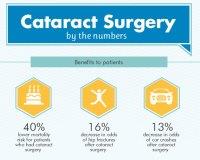Waiting On SMILE Surgical Treatment? Look Into Crucial Factors To Consider And Understandings To Assist You Make An Enlightened Choice About Your Visual Future
Waiting On SMILE Surgical Treatment? Look Into Crucial Factors To Consider And Understandings To Assist You Make An Enlightened Choice About Your Visual Future
Blog Article
Authored By-Lundgreen Moss
If you're pondering SMILE eye surgical procedure, contemplate this: are you prepared to welcome possible visual freedom, or does the idea of any type of threats make you be reluctant? Your choice will certainly rest on a cautious balance of evaluating the advantages against the uncertainties. It's essential to delve deeper into the nuances of SMILE surgical treatment to make an informed option that straightens with your visual objectives.
Comprehending SMILE Eye Surgical Treatment
When considering SMILE Eye Surgical procedure, it is necessary to understand the treatment and its advantages. SMILE, which represents Tiny Incision Lenticule Removal, is a minimally intrusive laser eye surgical procedure that fixes usual vision issues like nearsightedness (nearsightedness).
During the treatment, your eye doctor will use a femtosecond laser to develop a little incision in your cornea. Via this incision, a tiny disc of cells called a lenticule is gotten rid of, reshaping the cornea and fixing your vision.
Among the key benefits of SMILE Eye Surgical procedure is its quick recuperation time. Several clients experience improved vision within a day or 2 after the procedure, with marginal discomfort.
Furthermore, SMILE is known for its high success rate in supplying long-lasting vision adjustment. Unlike LASIK, SMILE doesn't require the production of a flap in the cornea, reducing the threat of complications and permitting a much more secure corneal framework post-surgery.
Understanding the treatment and its benefits is important when taking into consideration SMILE Eye Surgical procedure for vision improvement.
Benefits and drawbacks of SMILE
Thinking About SMILE Eye Surgical treatment for vision modification includes various benefits and possible drawbacks.
Among the main pros of SMILE is its minimally intrusive nature, as it involves a tiny cut and generally leads to fast recovery times. Cataract Surgery Outcome Monitoring is additionally recognized for triggering minimal discomfort and completely dry eye symptoms post-surgery compared to various other vision modification methods. Furthermore, SMILE has actually been shown to provide superb aesthetic outcomes, with several people achieving 20/20 vision or much better.
On the other hand, a prospective con of SMILE is that it may not appropriate for individuals with serious refractive errors, as the treatment range is somewhat limited compared to LASIK. One more factor to consider is that the understanding curve for surgeons executing SMILE can influence the accessibility of experienced service providers in certain areas.
It's important to evaluate these advantages and disadvantages carefully when making a decision if SMILE is the right choice for your vision adjustment requirements.
Determining Eligibility for SMILE
To figure out if you're qualified for SMILE eye surgery, your optometrist will certainly conduct an extensive assessment of your eye wellness and vision demands. Throughout this evaluation, factors such as the security of your vision prescription, the density of your cornea, and the general health and wellness of your eyes will be examined.
Typically, https://writeablog.net/val9terina/boost-your-recovery-techniques-with-important-referrals-for-cataract-surgery for SMILE are over 22 years old, have a steady vision prescription for a minimum of a year, and have healthy and balanced corneas without problems like keratoconus.
Your eye doctor will certainly also consider your overall eye wellness, any existing eye conditions, and your way of life needs to figure out if SMILE is the ideal choice for you. It's necessary to communicate any details visual demands or worries you may have during this evaluation to make sure that the treatment straightens with your expectations.
If you aren't qualified for SMILE, your ophthalmologist might recommend alternate vision adjustment options that better fit your specific requirements and eye wellness condition.
Conclusion
Inevitably, making a decision whether SMILE eye surgical procedure is right for you needs cautious consideration of your individual eye wellness and visual requirements. Talk to your optometrist to identify your eligibility for the treatment and weigh the potential advantages and disadvantages. Remember to communicate any problems or inquiries you might have during the assessment procedure to make an enlightened decision about your vision modification alternatives.
